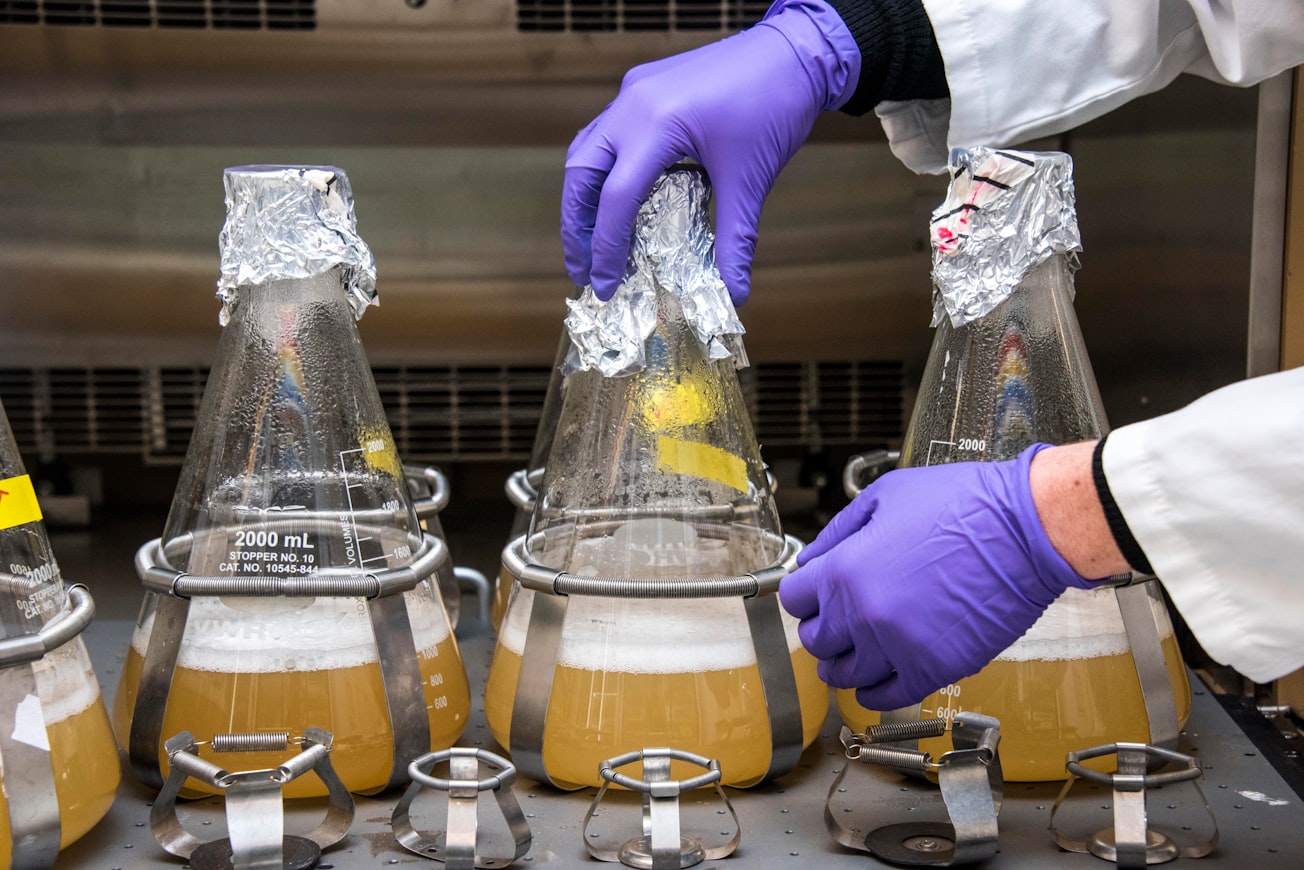What is it about?
Weeds are the main rivals of cultivated plants for resources, such as water, light, nutrients and space. The consequence of this competition translates to a loss in agricultural production. A series of phthalides were synthesized and evaluated in seeds of plants. In silico study was carried out to identify the enzyme target of the most active compounds.
Featured Image

Photo by Science in HD on Unsplash
Why is it important?
Compounds 15a, and 15b presented superior activity than the commercial herbicide (S)-metolachlor in the assays with Cucumis sativus, and Allium cepa. cepa. The in silico study provides strong evidence that the most active compounds bind to strigolactones esterases D14 through the same binding site of (5R)-5-hydroxy-3-methylfuran-2(5H)-one (H3M), which is one of the strigolactones (SLs) cleavage products.
Perspectives
Although the isomeric compounds 15a and 15b exhibited similar herbicidal activities, they bind differently to the active sites. The most active compounds are readily accessible from low cost reagents. This suggests that the use of these compounds for the development of novel herbicides is economically feasible.
Professor Elson Santiago Alvarenga
Universidade Federal de Vicosa
Read the Original
This page is a summary of: Herbicidal activity of isobenzofuranones and
in silico
identification of their enzyme target, Pest Management Science, May 2019, Wiley,
DOI: 10.1002/ps.5456.
You can read the full text:
Resources
Contributors
The following have contributed to this page







